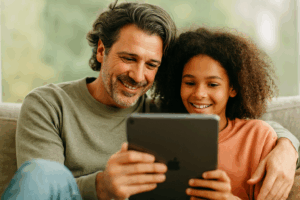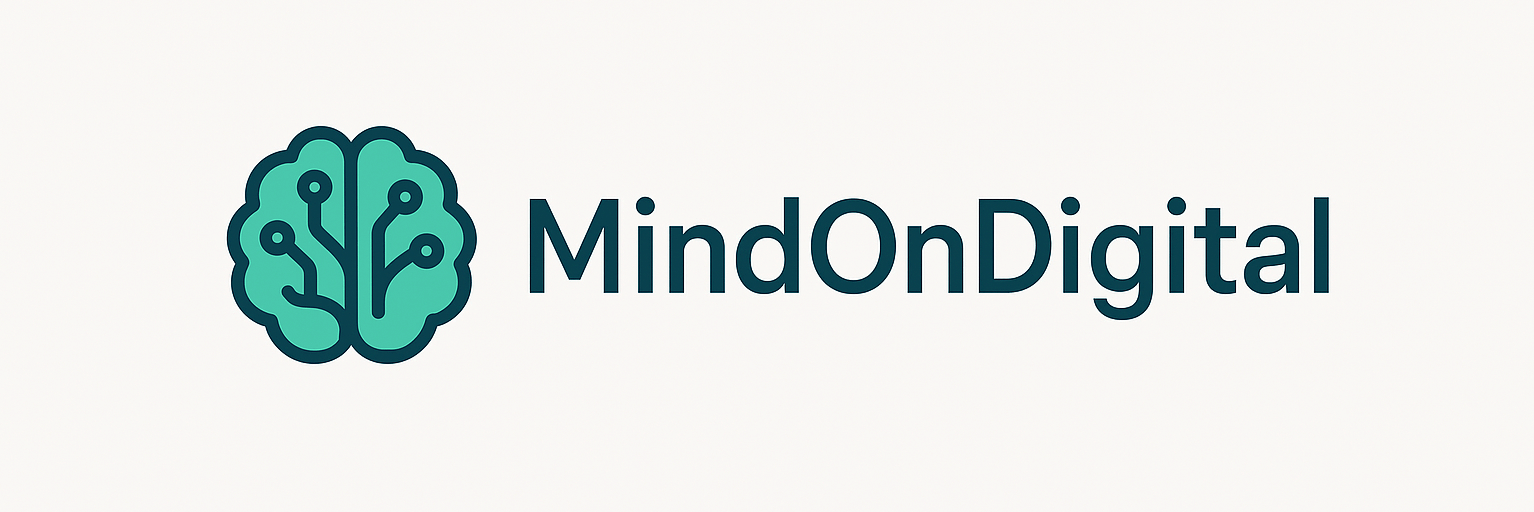
A guide from LeoByte28 for safe, conscious media use
Published on September 24, 2025 Author: LeoByte28 | Category: Digital self-determination, Media literacy, Youth
📱 Introduction: Why digital self-determination is indispensable today
Digital self-determination for children and young people is more important today than ever. They need digital spaces in which they can move safely, consciously and self-determinedly. In a world full of apps, platforms and digital stimuli, young people need guidance, tools and confidence to consciously shape their digital identity. Digital technologies are no longer an add-on in young people's lives - they are Living space, stage and tool at the same time. Children and young people communicate, learn, play and discover via digital channels. However, this world is not only fascinating, but also complex and full of risks.
Digital self-determination means taking control of your own digital identity, your own data and your own screen time. It is about Competence instead of controlto Responsibility instead of bans. And this is exactly where LeoByte28 comes in: As a youth-oriented tech guide, it shows how young people can consciously shape their digital world - with tools, knowledge and attitude.
🎯 What does digital self-determination actually mean for children and young people?
The Digital self-determination for children is a key skill in today's society that enables them to take responsibility for their digital lives.
Digital self-determination for children and young people involves more than just data protection - it means control over their own digital identity, time and communication.
- Data sovereigntyKnow what data you disclose, how it is processed and how it is protected.
- Media competenceCritically questioning content, recognizing fake news, understanding algorithms.
- Time managementControl screen time consciously, build in digital breaks.
- Self-control: Regulate impulses - for example for likes, notifications or gaming.
- Identity formation: Present yourself authentically and confidently online.
These skills are not innate - they have to be learned, practiced and reflected upon become. And the sooner this is started, the better.
🧒 Why children & young people are particularly at risk
The weaknesses of many platforms are particularly evident when it comes to digital self-determination for children and young people: Algorithms that manipulate and apps that are addictive.
- Dopamine-driven appsTikTok, Instagram & Co. are designed to attract attention and trigger reward loops.
- Social pressureLikes, followers and trends generate comparative behavior and uncertainty.
- Non-transparent algorithmsContent is not displayed neutrally, but according to engagement potential - which promotes filter bubbles and distorted world views.
- Lack of data protection knowledgeMany people do not know what happens to their data or how they can protect themselves.
👉 More on dopamine detox and screen stress with LiaMindy28
🛡️ What parents and teachers can do
Parents play a central role in promoting digital self-determination for children and young people - through education, support and technical assistance.
1. Educate at an early stage
- Explain to your child what cookies, trackers and location sharing mean.
- Use child-friendly tools such as Signal Messenger instead of WhatsApp.
- Show how to create secure passwords and why you shouldn't share everything.
👉 Password manager & security - explained in a child-friendly way
2. Using media together
- Create digital rituals: e.g. "offline time" after 8 p.m. or "screen-free Sundays".
- Watch YouTube videos together and discuss content critically.
- Use gaming as a conversation starter: What is fair? What is manipulative?
3. Using technical aids
- Apps like One Sec, Forest or StayFree help to regulate impulses.
- Screen time limits make sense - but only with explanation and co-determination.
- Use VPNs and tracking blockers to strengthen your privacy.
👉 Tools for digital mindfulness in the Detox blog
🧩 Digital self-determination at school
Digital self-determination for children and young people should be an integral part of media education in schools - not just as technology, but as an attitude.
- Reflection on digital identity → Who am I online? What do I show? What do I leave out?
- Discussion about data protection and privacy → What happens to my data? Who benefits from it?
- Projects on media criticism and fake news detection → How do I recognize manipulation? How can I do my own research?
- Involving students in the design of digital learning spaces → Co-determination in platform selection, data protection guidelines and communication rules
One example: During a project week, students create their own podcasts on the topic of "My data - my decision". They learn how to produce, research and publish content responsibly.
💬 Voices of young people
"I didn't even know that TikTok analyzes my interests to show me videos. Now I pay more attention to what I like." - Lina, 14
"I've set my Instagram profile to private and tidied up my follower list. I don't want everyone to see everything." - Elias, 16
"I've made a second account where I'm only with real friends. The other one is for memes." - Maya, 13
These statements show: Self-determination begins with awareness - and with conversations.
🔄 The role of platforms & politics
Platforms and legislators also bear responsibility:
- Platforms should offer youth-friendly default settings ("privacy by default") and enable transparent algorithms.
- Politics must promote digital education and teach data protection in an age-appropriate way.
- Parents and schools need support in the form of clear guidelines, tools and training.
👉 Digital sovereignty in everyday life - 5 paths to data protection
🎮 LeoByte28 recommends: Tools for digital self-control
LeoByte28 actively promotes digital self-determination for children and young people - with tools, tutorials and challenges that empower young people.
- One Sec: Delays the opening of apps such as TikTok or Instagram - for more mindfulness
- Signal MessengerSecure, ad-free and privacy-friendly
- Forest App: Rewards you for concentrated work with virtual trees
- Bitwarden: Child-friendly password manager with parental control
- Brave BrowserBlocks trackers and ads automatically
👉 You can find more tools in the Detox guide by LiaMindy28
📌 Practical tips for everyday life
Practical tips on digital self-determination for children and young people help them to consciously shape their everyday lives and online behavior - from detox zones to password protection.
- Draw up a "digital manifesto" together with your child: What is allowed, what is not?
- Use the "push pause" method: pause briefly before each click.
- Create a "digital detox zone" in the house: e.g. the bedroom.
- Use child-friendly VPNs and password managers with parental control.
- Talk regularly about digital experiences - such as everyday school life or friendships.
🧠 Conclusion: Self-determination can be learned - with attitude, tools and support
Digital self-determination for children and young people is not a state, but a process. With the right support, they can shape their digital world safely and freely. Children and young people need support, tools and spaces to develop self-determination - both online and offline.
It's not about banning technology, but rather consciously use. Those who learn to deal with digital stimuli, data and identities at an early age will later act more confidently, securely and freely.
LeoByte28 stands for friendly guide with tutorials, challenges and tools that empower young people instead of patronizing them.
📲 Follow LeoByte28
Follow LeoByte28 for more content on digital self-determination for children and young people - on TikTok, Instagram and Facebook.
Stay tuned for more articles, tools and tutorials on digital self-determination, gaming, data protection and media literacy:
- 📘 Facebook - LeoByte28
- 📸 Instagram - @LeoByte28
- 🎵 TikTok - @LeoByte28
Get weekly impulses from Leo & Lia - for more focus, detox and self-determination.
👉 Subscribe to the newsletter now
